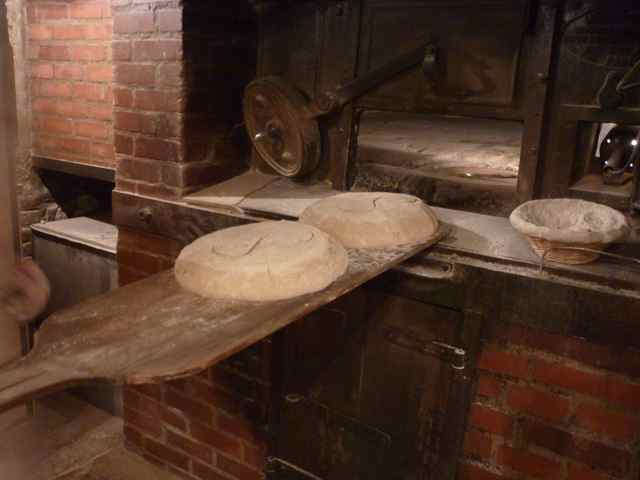This was an excellent question asked recently by one of our mobile oven clients. Excellent questions deserve thorough answers, so our very own Albie Barden stepped up to the plate on this one¦
For the past ten years, we have been importing Le Panyol wood fired ovens from France. The wood fired ovens of France have a design that goes back to Roman times. Wood was placed directly on the hearth under the flue to start the fire and as the fire engaged, the fuel pile was pushed as a crib to the rear. This is the same firing process we use today. This gas flame burning at the rear travels to the ceiling and heats the entire oven core. Ashes from non-treated wood are not toxic so a small amount of ashes left on the floor of the oven, even after a burn, presents no health hazard to the user.
Some wood fired ovens, such as the Poilane ovens in Paris or our model 250, are fired from below the hearth floor with the oven recharged, whenever necessary, by stoking the fire below and directing flames into the oven through a cast iron elbow called a gueullard. The gueullard can be rotated left or right as it swivels in a cast iron ring set into the hearth so it is easy to get flame and heat everywhere in the oven. Once the oven is recharged, the gueullard can be removed and set aside and a cover, with or without a water pan, is set on the round hole just inside the door of the oven.
Coal is much denser than wood and has a much shorter flame path. Traditionally, one could not light coal on the floor of the oven without a grate. The grate would have to be scraped across the floor or located in the rear with difficulty in filling the grate from the door. In the first half of the twentieth century there were a large number of commercial coal fired ovens in the States, mostly in urban areas. Coal was easier to store and had a longer burn but a shorter flame. Such ovens were designed with a firebox below and to one side of the oven door. The oven floor and oven cavity were typically square or rectangular in shape. Very heavy cast iron doors would cover the firebox opening. Inside the firebox there would be a heavy “shaker” grate. On the hearth floor itself there might be a fixed grate that the very hot exhaust gases could pass through on their way to an exit at one or both rear corners of the oven. Such ovens had relatively low ceilings, often only slightly arched and sometimes flat with heavy firebrick tiles hung on steel channels from above.
The very famous Italian pizza ovens of New Haven are these heavy under fired coal burning ovens. The exhaust gases hang at the ceiling level and stay in a layer above the food, but no smoke and very little ash gets into the food. I visited a patented design coal fired commercial bake oven in Colchester, CT. many years ago that had two side by side fireboxes underneath the oven floor and then the exhaust gases were carried in a manifold (of as many as six) 6″ diameter cast iron pipes set in the mass on top of the oven arch. These all come together over the front of the oven and exit the chimney. This oven could run constantly with heat all around the oven adjusted with additional fuel and draft controls. No flame or fuel dust ever entered the oven.
The arched dome ovens by Le Panyol have no design relationship to any of these traditional commercial coal fired ovens and there is no easy or safe way that we know of that our Le Panyol models can be reasonably converted to coal. We also believe in the efficiency and durability of the Terre Blanche material that makes up the Le Panyol oven core. The thermal properties, conductive surface and the unique dome shape design ensures even heat distribution resulting in unequaled culinary versatility.




